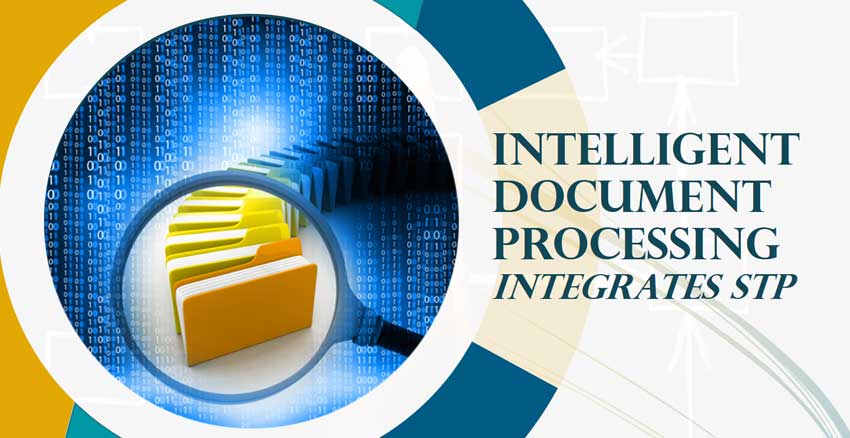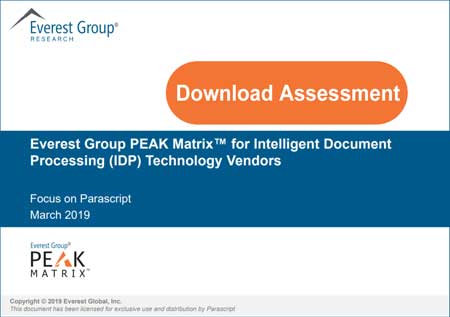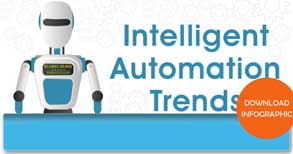Intelligent Document Processing with advanced capture can play a critical role in overall process improvement by offering straight through processing or STP. Advanced capture may be one of the highest contributing factors when it comes to overall process improvement and savings. In our industry, we have been conditioned to evaluate capture in terms of OCR, read rate, extraction and efficiency. Little thought has been given to the notion of straight through processing because until recently, it was unachievable. If you would like to find out more, here’s a recent presentation, “Intelligent Document Processing Optimization,” which I gave on this topic as well as this article.
Measuring Opportunity & Benefit
Measuring today’s opportunity and the benefits of advanced capture hinges on quality data results, in a word: accuracy. This accuracy is the amount of correct answers from all answers output from advanced capture software. The accept rate is the percentage of those results or answers at a given accuracy rate that do not need review; that is straight through processing (STP). This STP is the percentage or number of documents that go through the system with zero touch or human contact.
Typically, you cannot achieve STP until your error rate is below 4%—any higher than 4% and you end up reviewing every document. There will always be some level of error to deal with. The question becomes “what is an acceptable rate of error?” To lower your error rate, you can take advantage of unattended machine learning to train and configure advanced capture systems prior to deployment.
We use ground truth data processed by our software against sample images provided to train the system. This reduces the error rate and saves literally man-years of development time.
With Parascript FormXtra.AI, for example, we use ground truth data processed by our software against sample images provided to train the system. This reduces the error rate and saves literally man-years of development time. We then use unattended automation and machine learning to tune the system in production in near real-time. This document processing capability includes classic document capture, government and commercial mail functions, financial transactions around check, fraud detection, signature verification and validation as well as word spotting for handwriting and machine print. Parascript is known as the best in handwriting recognition and has been doing it the longest. Parascript software processes hundreds of millions of pages per day. Even though we have been doing this for years, we are constantly improving performance using the latest techniques and technologies.
Beyond OCR Software
OCR accuracy rates are not as relevant today. OCR provides some very basic functionality. What is important is what comes out of the pipe, how fast and at what level of cost. If you are going to use truth data to train your system, the accuracy of that truth data is critical. Think of it in terms of grading a test. If your answer key is flawed, how can you rely on the validity of the test scores? You need reliable truth data, a viable measurement in order to achieve high rates of accuracy.
In the old days, we looked at OCR accuracy rates at 99% on machine print as a good thing measured on a per character basis. This means if you had more than a hundred characters to extract from a page or a document, there was no STP because someone needed to review every single item. This drove the offshore versus automation cost-benefit debate. This value represents the downstream level of effort you are spending to correct items that could have been caught and captured. This is typically an exponential cost impact. The old adage of an ounce of prevention is worth a pound of cure comes to mind or as I like to say, why is there never enough time to do it right the first time, but always enough time to go back and do it over.
Cost of Correction
The cost of correction gets higher and higher the longer you allow. In sailing, think back to how easy it was to miss the entire island of Bermuda if you were only five degrees off your course heading. Bermuda is about a thousand miles off the eastern coast of the United States. If you are off your heading by only three to four degrees (which is nothing), you could miss the island by 50 miles or more.
The shortest distance between two points is a straight line. Of course, wind and cross currents must be taken into account to maintain course, consume the least amount of fuel and reach your destination in the quickest amount of time. Sailboats make minor adjustments often to stay on course ensuring optimal time and fuel consumption.
Unattended automation works much the same way with lots of input to make minor corrections quickly and regularly. The optimal quality data results for advanced capture is a result of minor changes invoked more frequently, allowing the system to learn faster, which in the end produces fewer errors that have to be dealt with in the first place. For most advanced capture platforms who make use of attended or rules based learning environments, their systems apply learning in bigger chunks over longer periods of time. This means you are subject to greater impact for the same level of ever over that time period.
Avoiding Negative Downstream Effects
We often forget the downstream effect of passing document-processing errors onto the next step. In the business process, we talk about the 1-10-100 rule that states it could be as little as 10 times or as much as a hundred times the level of effort to correct a flawed transaction as it does to process a clean item depending on where you catch the error. So any reduction in flawed transactions released into the business process can increase productivity significantly with absolutely no change to the business process merely by providing more transactions that can be processed at one x the resource investment. The other issue with capture errors corrected in the process is that there is no way to take advantage of the corrective action in the form of learning because there is typically no feedback to the capture from the business process or workflow.
Advanced capture like Parascript FormXtra.AI is easily configured by constructing a very basic form definition, providing the system with representative number of samples and associated ground truth data. FormXtra.AI maps the data to the images, fine tune the form definition and get you in production within days. During production, unattended smart learning fine-tunes the system based on actual production output, improving the process automatically over time. This gets you to the highest level of accuracy, greatest degree of STP in the shortest amount of time.
Achieving STP in Document Processing
If you are still manually prepping, scan batches, visually bursting TIF or pdf package or keying from image, there is significant opportunity for improvement in savings for you. FormXtra.AI achieves measurable straight through processing that produces significant cost savings and increased throughput both in capture and workflow.
The savings and benefits are so immediate and impactful that you can finance a much larger project on the back of Parascript software performance. When taken in terms of capital performance, we outperform the cost of capital on a monthly basis where you to go out and finance a project. This means you can look at Parascript as an investment and measure our value in terms of overall improved business process that produces retained earnings. We look forward to talking to you in the near future.
Everest Group Recognizes Parascript as a “Major Contender” in the Everest Group PEAK Matrix™ for Intelligent Document Processing (IDP) Technology Vendors 2019 | Focus on Parascript“.
For the latest trends in intelligent document automation, check out this infographic, “Intelligent Automation Trends: How the Digital Workforce Takes Advantage of Document Automation Solutions,” based on the recent AIIM Survey of 100 leaders in capture.




